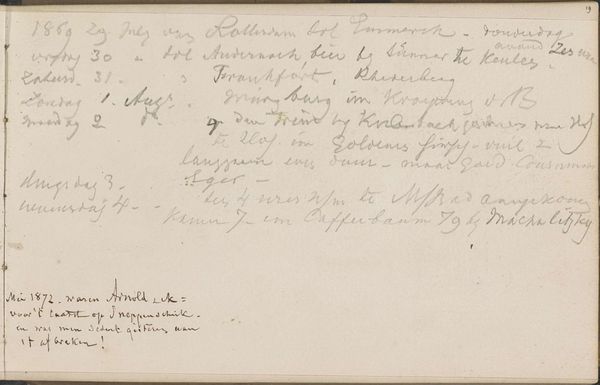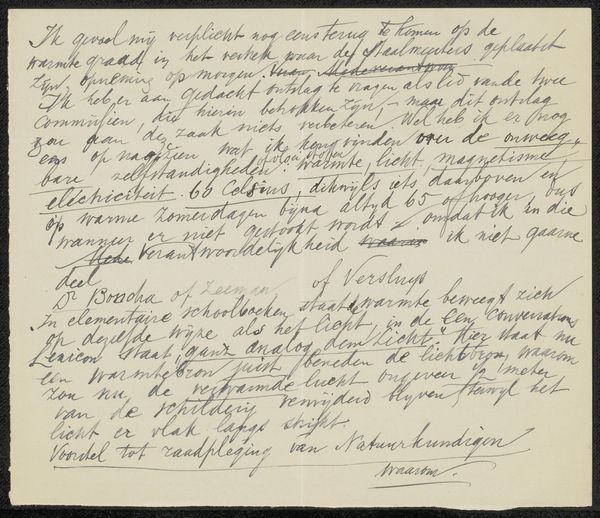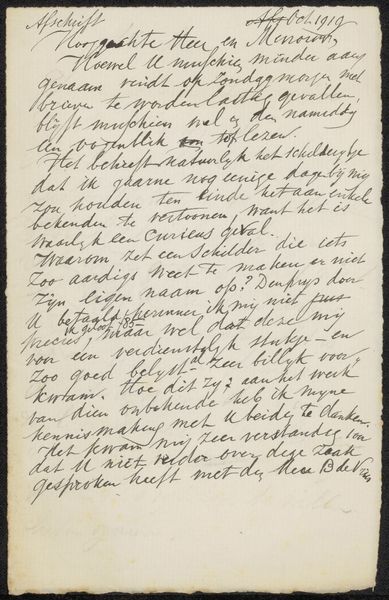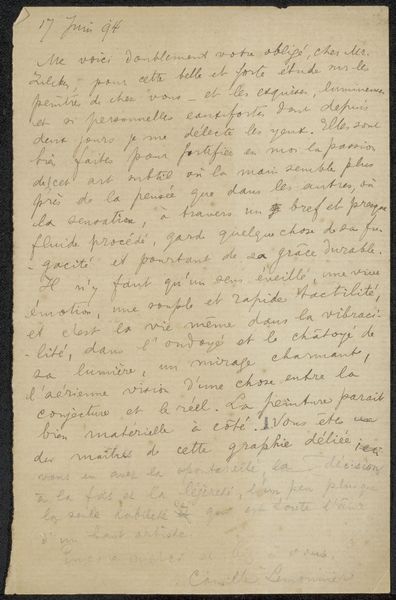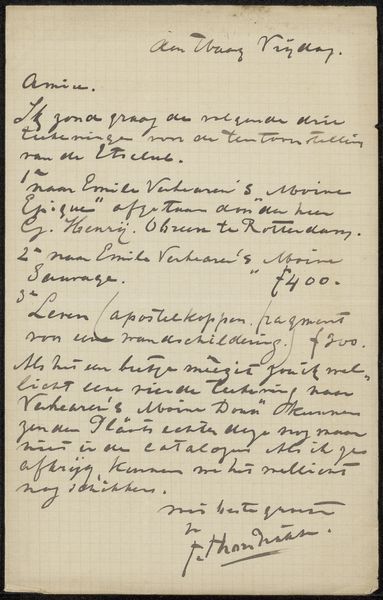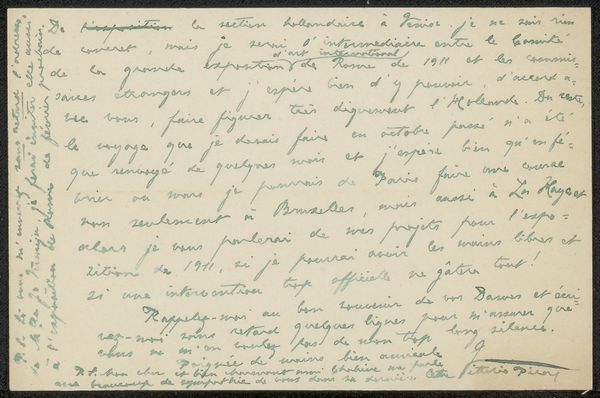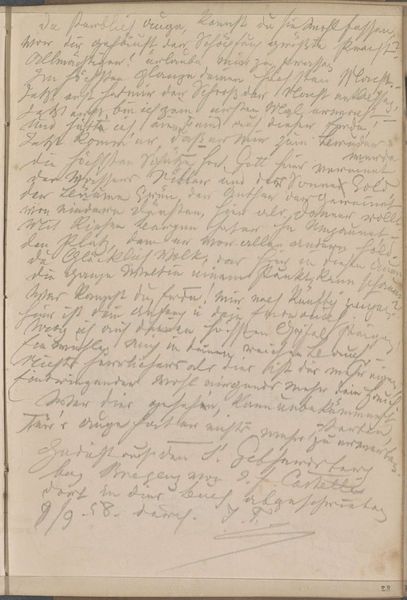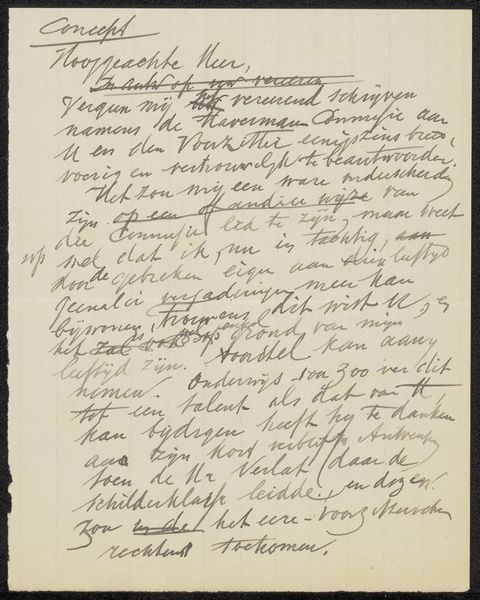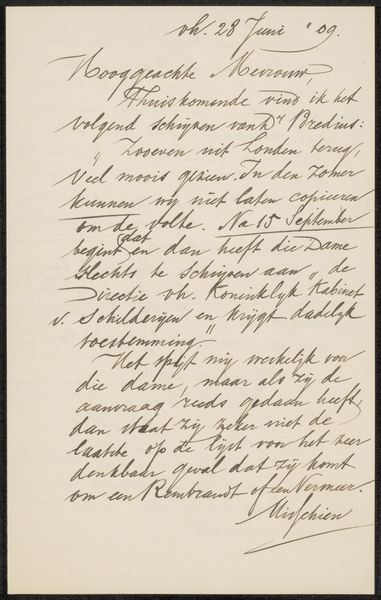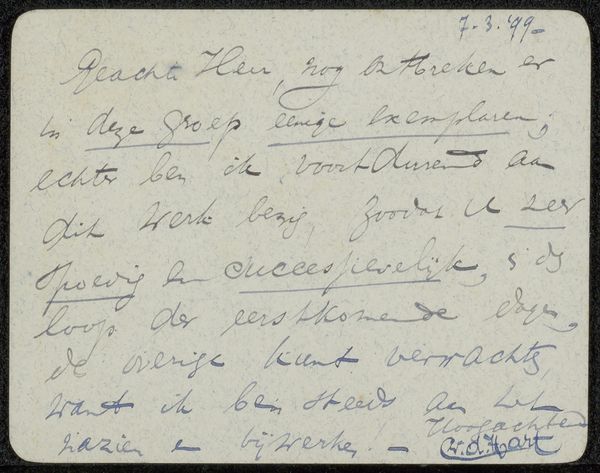
drawing, paper, ink
#
drawing
#
narrative-art
#
paper
#
personal sketchbook
#
ink
#
fading type
Copyright: Rijks Museum: Open Domain
Editor: Here we have "Reisnotities," or "Travel Notes," created in 1869 by Johannes Tavenraat, rendered in ink on paper. The fading ink lends it an ephemeral quality, as if capturing fleeting thoughts. It feels deeply personal, like a glimpse into the artist's mind. What strikes you when you look at this page? Curator: This piece, beyond its literal depiction, functions as a palimpsest of sorts. Think about what it meant to document your life, your thoughts, your travels in 1869. Who had access to such materials? What socio-economic class did Tavenraat likely belong to, given the leisure and resources required for travel and artistic expression? The act of writing, the conscious recording of experience, was often a privilege tied to power. Editor: So, the very act of creating this travel journal is significant in itself? Curator: Precisely. Consider the narrative it constructs. Whose voices are amplified in historical records, and whose are silenced? We must ask ourselves: how does a piece like this reinforce existing power structures or, perhaps, subtly challenge them through the simple act of personal expression? Even this fading type is part of the statement; the notes may be temporal. Also, look closely. Are these simple observations or seeds of potentially larger works? Editor: That's a great point! I was initially drawn to the intimate feel, but framing it within a discussion of accessibility and power shifts my perspective. Curator: Exactly! Approaching art with a critical eye, attentive to its historical and social contexts, allows us to excavate layers of meaning that might otherwise remain hidden. What appeared personal now speaks to broader themes. Editor: I now see the sketch as a testament of selfhood amid historical context. Thank you for revealing that.
Comments
No comments
Be the first to comment and join the conversation on the ultimate creative platform.
